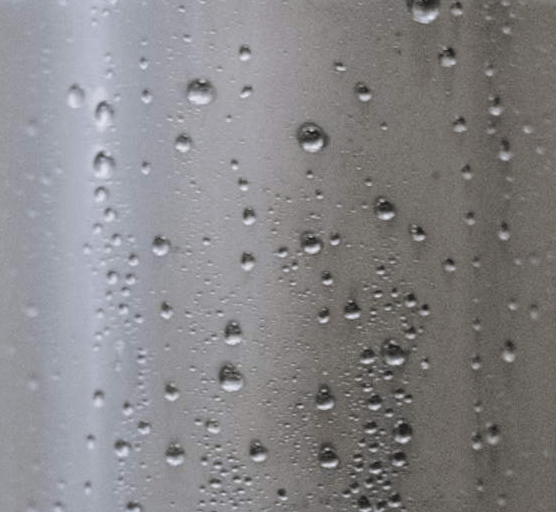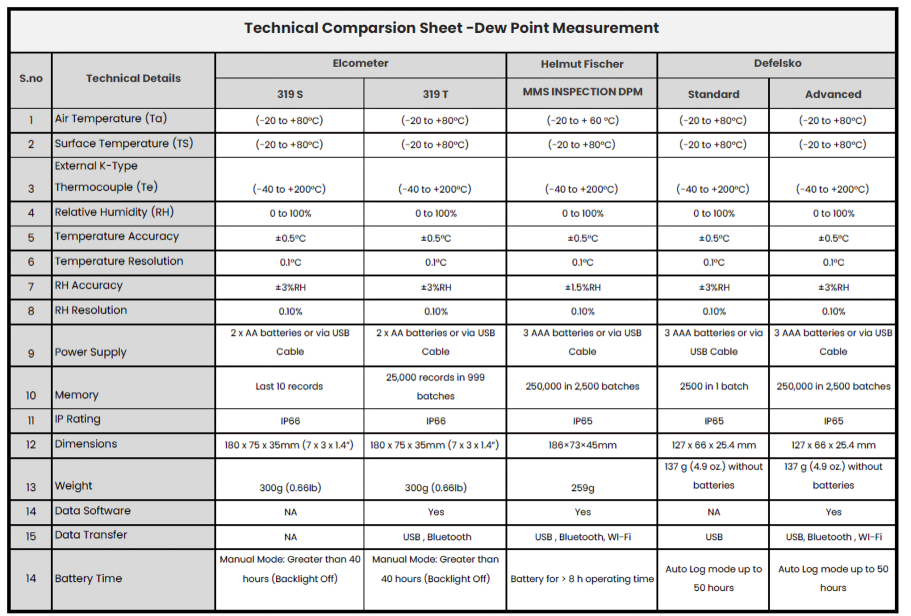Ensuring Perfect Surface Preparation: The Importance of Dew Point Measurement in Industrial Coating and Plating
In industries where coating and plating quality can make or break product durability, precision is everything. Dew point measurement is a vital step in surface preparation, helping to avoid moisture-related adhesion failures that lead to costly reworks and premature degradation.
DEW POINT MEASUREMENT
Nextagen Analytics
11/3/20244 min read


In industrial settings, preparing surfaces correctly is paramount for ensuring the quality and durability of coatings and plating applications. Dew point measurement is a critical component of surface preparation as it helps prevent moisture-related adhesion issues that can compromise coating performance. This paper examines the significance of dew point measurement before coating or plating, analyzes the key parameters influencing dew point measurements, reviews leading manufacturers and their technical specifications, and outlines standard operating procedures (SOPs) and applicable industry standards.
1. Introduction
In industries such as automotive, aerospace, and heavy machinery, surface coating and plating processes are widely used to enhance material durability, corrosion resistance, and aesthetic appeal. However, for coatings and plating to bond effectively with substrates, the surface must be properly prepared. Among various environmental factors, moisture plays a crucial role; improper control can lead to substandard adhesion, ultimately compromising the durability of the coating or plating. Therefore, dew point measurement—monitoring the temperature at which moisture condenses on surfaces—is vital for optimizing the quality of coatings and plating.
2. Understanding Dew Point Measurement
2.1 Definition of Dew Point
Dew point is defined as the temperature at which air reaches its saturation point and water vapor condenses into liquid form. This temperature varies depending on ambient temperature and humidity. In the context of surface preparation, dew point measurement refers to determining the dew point in proximity to the substrate to assess whether the environment is suitable for applying a coating or plating.
2.2 Dew Point vs. Relative Humidity
While relative humidity (RH) provides a general idea of moisture in the air, dew point is a more specific measure because it reflects the temperature at which condensation will occur on the substrate. For coating applications, the surface temperature should ideally be a few degrees above the dew point to prevent condensation, ensuring optimal adhesion.
3. Importance of Dew Point Measurement Before Coating and Plating
3.1 Role in Adhesion Quality
Condensation on a substrate's surface due to an inadequate dew point can lead to poor adhesion of coatings or plating. This weakens the bond between the substrate and coating, leading to issues like peeling, flaking, and reduced corrosion resistance.
3.2 Impact on Corrosion Resistance
Inadequate dew point control can result in residual moisture between the substrate and coating. This trapped moisture creates an environment conducive to corrosion, undermining the protective qualities of the coating.
3.3 Cost Efficiency and Product Longevity
Ensuring the substrate is moisture-free reduces the likelihood of coating failure and premature degradation, minimizing maintenance costs and maximizing the coated material’s lifespan.
4. Parameters in Dew Point Measurement
Several factors affect dew point measurement, and understanding these is essential for reliable readings:
4.1 Ambient Temperature
Higher ambient temperatures generally reduce the risk of dew formation, provided they remain above the dew point temperature. Accurate ambient temperature readings are necessary to set parameters for coating applications.
4.2 Relative Humidity (RH)
Relative humidity is essential for calculating the dew point. Generally, a higher RH at a given temperature will lower the dew point, increasing the likelihood of condensation on the substrate.
4.3 Surface Temperature
The temperature of the substrate surface should ideally be maintained at a minimum of 3°C above the dew point to avoid condensation. Surface temperature is directly measured using surface thermometers or pyrometers in conjunction with dew point meters.
4.4 Air Velocity
Air movement impacts the rate of cooling on the substrate surface, influencing the dew point. In high-velocity conditions, surfaces can cool rapidly, increasing condensation risks.
5. Dew Point Measurement Instruments in the Market
Several manufacturers produce dew point measurement instruments designed specifically for industrial applications, with each device having unique technical specifications and capabilities. Here’s an overview of some prominent manufacturers and a comparison of their products.
5.1 Key Manufacturers
5.2 Technical Comparison
5.3 Analysis of Instrument Selection
While selecting an instrument, factors such as required temperature range, data logging capability, and accuracy level should be considered. Instruments with a high degree of accuracy are typically recommended for critical applications.
6. Standards and SOP for Dew Point Measurement
6.1 Industry Standards
Various standards guide dew point measurement and surface preparation for coating. Key standards include:
ISO 8502-4: Preparation of steel substrates before application of paints and related products — Tests for the assessment of surface cleanliness.
SSPC-Guide 12: Standard Guide for Illumination, Drying, and Surface Temperature Control During Coating Application.
ASTM D3276: Standard Guide for Painting Inspectors (Metal Substrates) for Controlling Quality of Application.
6.2 SOP for Dew Point Measurement
Calibrate the Instrument: Before use, ensure that the dew point meter is properly calibrated according to the manufacturer’s instructions.
Prepare the Measurement Area: Clean the substrate to avoid dust or particulate interference with readings. Ensure no strong airflow in the area to avoid fluctuations.
Measure Ambient Conditions: Record the ambient temperature and RH at the application site.
Measure Surface Temperature: Use a surface thermometer to gauge the substrate temperature and compare it to the dew point reading. Ensure it is at least 3°C above the dew point.
Record Data: Document all readings, time, date, and ambient conditions for future reference or auditing.
Verify Measurements: Repeat the measurements periodically to confirm conditions remain stable throughout the coating or plating process.
7. Conclusion
Dew point measurement is an indispensable procedure in the preparation of substrates for coating and plating applications. By ensuring the substrate is free from condensation, industries can significantly enhance coating adherence, corrosion resistance, and the overall quality of the end product. Accurate dew point measurement, coupled with adherence to established standards and a clear SOP, enables optimal results. Continued advancements in dew point measurement technology and stringent quality control will likely drive better performance outcomes in industrial coating applications.
Nextagen Analytics assists industries in selecting the optimal dew point measurement technology by providing data-driven insights tailored to specific applications, performance needs, and cost considerations. It also supports ongoing maintenance through predictive scheduling, real-time monitoring, and long-term data analysis, ensuring consistent accuracy and optimal performance in coating and plating processes. This approach enhances both initial selection and long-term reliability, improving coating adhesion and longevity in industrial applications.
Key Source : https://www.nextagen.in/portables | Nextagen Analytics






Innovation House
Mon-Sat 9am-7pm

contact@nextagen.in

+91 2654059388
© 2024 Nextagen Analytics Private Limited . All Rights Reserved.